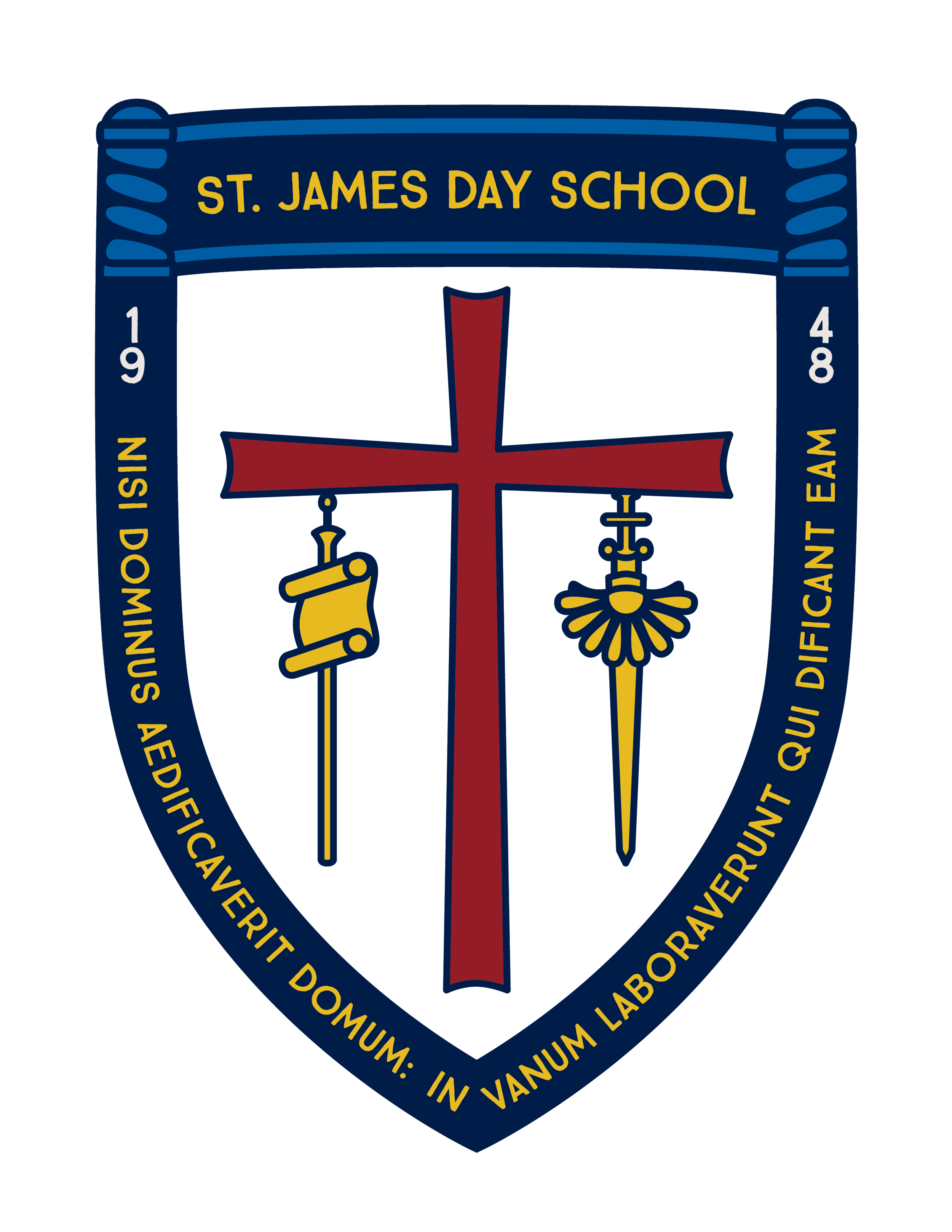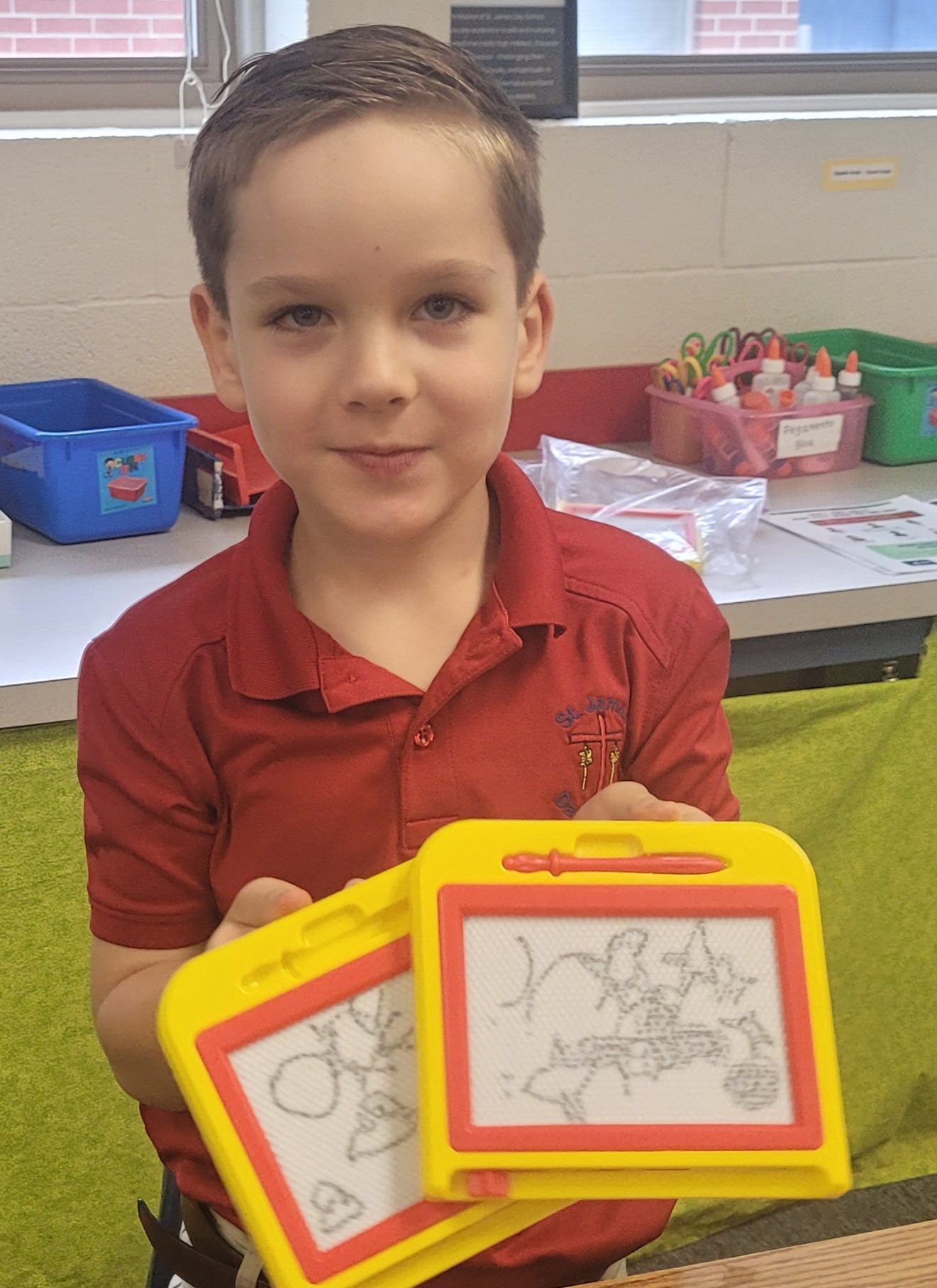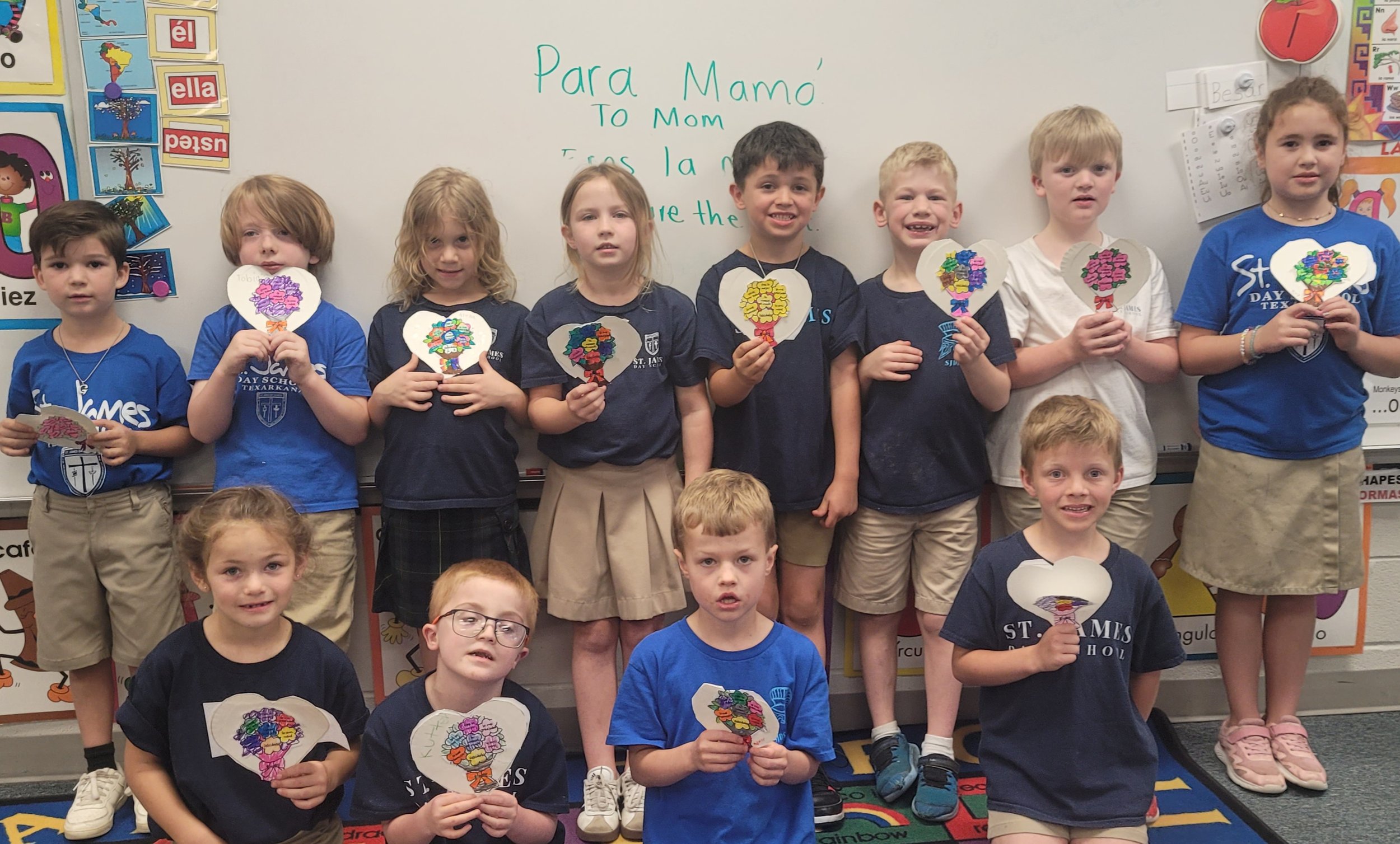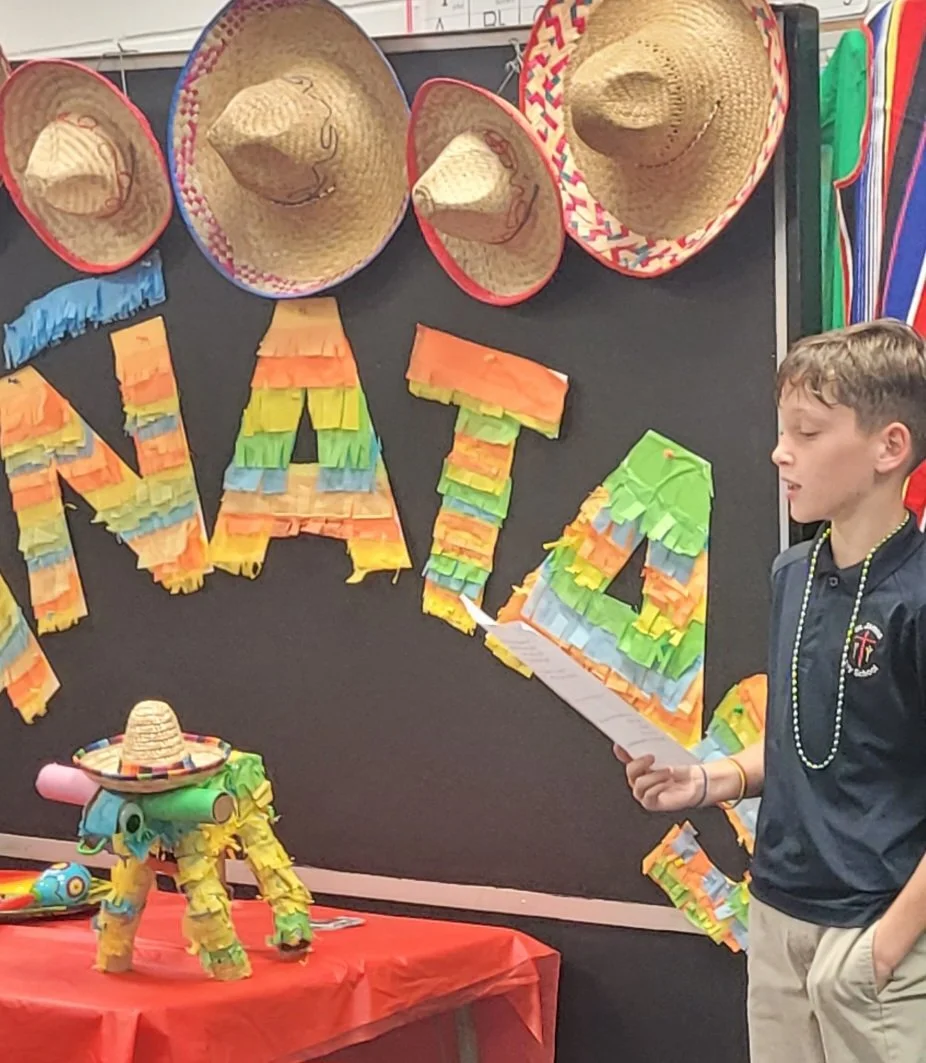HAVE A GREAT SUMMER!
For Mother's Day, the students wrote some special words for their mothers in Spanish.
HAPPY MOTHER’S DAY!
Students continue to expand their vocabulary by learning more sight words (palabras de alta frecuencia) and how to use them in sentences. They are doing an excellent job, and I am proud of them.
These past weeks, we have concentrated on learning sight words in Spanish and their meaning in English. Learning to recognize sight words—palabras de alta frecuencia—is an excellent development for reading and understanding what is being read. Students are doing an excellent job learning these words and their meanings.
Before the students learn how to conjugate verbs in Spanish, they need to be familiar with the infinitive form of verbs. They learned that the infinitive verbs in Spanish end in (ar), (er), or (ir). For example, cantar (to sing), comer (to eat), and vivir (to live). Then, they learned to conjugate these verbs into present and past tense. I’m proud of them!
Initially, students learn the numbers in Spanish in numerical order. Keeping the numbers in order makes learning the numbers easy, but maybe too easy. This week, I challenged students to learn the numbers 1-4 in Spanish outside of their numerical order and then place them in their numerical order. Later, students were given a worksheet that depicted pictures of boxes with different numbers of apples in them. Students had to count in Spanish and write down the missing numbers on the side of the boxes. Then they had to count in Spanish the number of apples in each box. Finally they had to cut out the boxes of apples from the worksheet and paste them in numerical order. They did a great job on this assignment and I am proud of them.
Over the last couple of weeks, students have had fun learning the words for body parts. For example, they learned the words pies (feet), cejas (eyebrows), uñas (fingernails), dedos (fingers), and pestañas (eyelashes).
Here at St James, we are once again preparing to sing a song in Spanish for Grandparents’ Day. They are working hard and they are almost ready for the big day. Meanwhile, the third-grade students are learning a new vocabulary about items in a house.
I'm excited about the start of 2025. The students are returning from the Christmas break eager to see their friends and learn new Spanish words. We began by reviewing the vocabulary of the days of the week and months of the year. We also revisited how to say the numbers and letters in Spanish, and we look forward to doing so much more.
We are also getting ready for Grandparents’ Day!
Students continue to have fun learning Spanish as the Christmas holidays draw near. They are coloring, cutting, and learning the Spanish words for Christmas tree, gingerbread, and snowman. They also learned to say scarf, gloves, hat, and more in Spanish. The fourth-grade students had fun playing a game that required them to know the names of the colors in Spanish.
¡Feliz Navidad y un Próspero Año Nuevo!
These students have learned Spanish vocabulary and the word’s corresponding parts of speech (nouns, verbs, adjectives, etc.). They have also learned to work together in groups of three or four, which makes learning Spanish fun. In preparation for Thanksgiving, students learned to say Thanksgiving Day in Spanish ( Día de Acción de Gracias). They have also learned why people in this country celebrate this special day. But, most importantly, we talked about all that we have to be thankful for.
Happy Thanksgiving Day!
We had another successful presentation of the piñatas this year. While having fun making their piñatas, our hard-working fourth-grade students learned some Spanish and aspects of Mexican culture.
They started this project by researching the type of piñata they wanted to make. Then they found three facts about their piñata and learned to say their materials in Spanish.
During their presentations, students mentioned how they made their piñatas. While doing their piñata projects, students learned new vocabulary and how to work together. In the process, they discovered that learning can be fun.
After the students' presentations, the students and their parents enjoyed some Mexican food and had a good time.
I’m proud of them!
Over the last few weeks, the students have learned to pronounce family names in Spanish. They then had fun using these names to build a family tree. After coloring the family tree, they wrote a few sentences in Spanish to explain the relationships depicted in the tree.
Our students are having fun learning how to write the numbers in Spanish. They are also completing activities to learn the Spanish words for different shapes and colors.
Aprendiendo a escribir los números del cero al treinta. Learning how to write the numbers from zero to thirty.
Aprendiendo a escribir el número veintidós--Learning how to write the number twenty two.
Practicando una conversación–Practicing a conversation
Practicando una conversación–Practicing a conversation
Practicando una conversación–Practicing a conversation
Leyendo--Reading.
Escribiendo--Writing.
El óvalo
El triángulo
Divirtiéndose con los globos de colores– having fun with the balloons.
Brincando los globos— Jumping the balloons!
Divirtiéndose con los globos de colores– having fun with the colorful balloons
Aprendiendo sobre las formas geométricas---Learning about the geometric shapes
El círculo
Learning the alphabet in Spanish is challenging, but for these students, it seems easy. We learned a song about the alphabet. Students wrote new vocabulary words that start with the letter “C,” such as corazón, casa, calcetin, caballo, caracol and conejo. Finally, the students colored and glued the letter C in their notebooks.
Today students learned about the vowel “a” in Spanish. To help understand this vowel, students learned the word for the insect bee in Spanish (abeja). After being introduced to the vowel “a” and the word abeja, students colored a picture of a bee (abeja) and repeated the word to learn how abeja is pronounced. In the process, students learned the sound of the vowel “a” in Spanish and also learned the Spanish word for bee while having fun coloring.
OH,… ALL THE THINGS THE STUDENTS WILL LEARN IN SPANISH THIS YEAR!
We are about to finish this school year, but before it ends I want to say it has been my pleasure to see your child grow and progress in learning Spanish every week.
This year we learned a lot, but the most important thing that we learned is that learning a second language like Spanish can be rewarding.
Have a great Summer!
Students are having fun reading short books in Spanish. Reading books helps students recall and comprehend vocabulary, as well as learn new words. Students need to be challenged to read in a different language at this point in the year. Such readings increase the students’ cognitive development and understanding of language.
Students are practicing the lists 1, 2, and 3 of the sight words assigned to them. Students practiced memorizing the sight words in groups of two or three. We then practiced the sight words in the class as a big group. Each student had the opportunity to practice the words aloud. After practicing, they took a spelling test in the class.


















































































































































































































































































